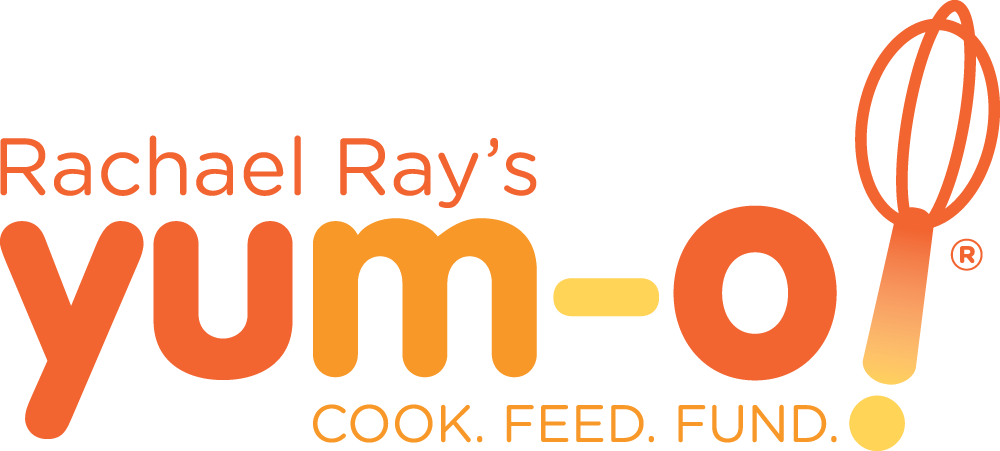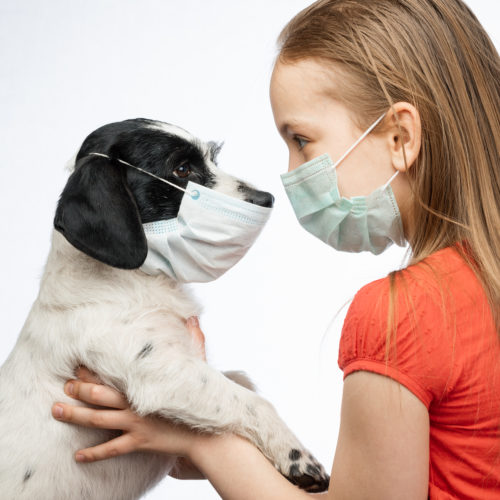Yum-o!’s Executive Director Participates in Share Our Strength’s Hinges of Hope Tour
(New York, NY) — This past February, Yum-o!’s Executive Director, Andrew Kaplan, participated in his second Share Our Strength® (SOS) Hinges of Hope tour in the New York City area. In the recap that follows, Andrew shares his insights and impressions from this moving experience.
Hinges of Hope tours are trips that Share Our Strength puts together for various people affiliated with the organization – such as chefs, board members, donors and future partners – to showcase the hands on work SOS does in bringing great hope to areas of despair. Once again, this Hinges of Hope trip was a powerful, moving experience filled with amazing people who bring hope to others in need. The trip was funded and made possible by past New Orleans Hinges of Hope participants, the Strohmeyer family, of New Jersey-based Triangle Manufacturing.
The day started with a brief meeting at The Hotel Chandler to gather as a group. We then headed to PS 68, a public school in the Bronx that is implementing a school breakfast pilot program.
PS 68
Bronx, NY
We were greeted at the school by Principal Coles, a strong, dedicated woman who has been in the educational system for 29 years, and someone who genuinely cares about her students. Over 90% of the students in Principal Coles’ school qualify for the free or reduced price lunch program. We toured the school, walking in and out of classrooms while talking with second, fourth and fifth graders about the importance of breakfast and what eating breakfast means to them and their parents.
This particular school is one of 22 schools in New York City doing a school breakfast pilot program where breakfast is served in the classroom instead of the cafeteria. The School Breakfast program was enacted by Congress as a pilot in 1966 and made permanent in 1975. It is considered a cornerstone of our national commitment to ensure that low-income children start their school day with the food and nutrition they need. But many children fail to take advantage of it. For lunch, they are already at school. But breakfast means arriving early, different bus schedules and often the stigma that comes with identifying themselves as needing a free or reduced price breakfast. Therefore, participation rates have been relatively low.
In this new pilot program, each morning, students are served a breakfast containing low fat milk, natural juice, cereal and a little breakfast pastry right in their classrooms; the day we were there the pastry was carrot cake made with some whole wheat flour. There is also a new bag being tested that has games and crossword puzzles on it that keeps the kids active and exercising their minds. Previously, it was a plain white bag that doubled as a placemat, but now there is a little educational component to it.
The kids had lots to say about breakfast. We heard things along the lines that their parents like when they eat breakfast, that they get to school on time as a result of the program and that now they feel more awake during the day. Principal Coles told us, “We used to call parents at home and ask ‘why are your kids falling asleep in class?’ But now they come and are focused and alert, and we have much less tardiness and much better attendance.” Research backs up the results at PS 68: numerous studies show that kids who eat breakfast are better able to concentrate in the classroom, interact with other children in a positive way, and perform better on standardized tests – and that’s on top of their attendance going up.
Prior to this pilot program, Principal Coles’ school had about 200 of their 800 students eating breakfast. Now, they have over 700 of their 800 students eating breakfast. It was amazing to see the difference eating a nutritious breakfast can make for a child.
New York City Coalition Against Hunger (NYCCAH)
New York, NY
After the introduction to the school breakfast pilot program, Joel Berg, Executive Director of the New York City Coalition Against Hunger, gave a moving talk to the participants. Joel is one of, if not the, most passionate people I have ever met when it comes to the issue of hunger. In his words, “A vast amount of research proves that children who eat breakfast have higher test scores, fewer school nurse visits, and act up less in class. It makes no sense to say that children should get either books or breakfast – they should obviously get both.”
Joel spoke about the 1.7 million New Yorker’s living under the poverty line – $19,800. He also spoke about the 1.3 million people in New York who cannot afford food and the 1 in 5 who are hungry. 417,000 of them are children.
In 1980, there were just two dozen soup kitchens in New York, while today there are over 1200. Yet demand is so high that half of them are turning people away because they don’t have enough food. To put the issue of hunger into perspective, imagine going to sleep tonight and not knowing where your next meal is coming from. Not just being unable to choose which cuisine you feel like eating or which restaurant you want to go to or what you’d like to cook, but not knowing if you are even going to be able to eat, let alone feed your own child! Joel, for one, is not giving up on this very curable problem of hunger in New York City, and in America.
The Community Kitchen of Harlem
New York City, NY
From our discussions at PS 68, we headed to The Community Kitchen of Harlem, a soup kitchen that is a subsidiary of the Food Bank for New York City. We toured their pantry, which is designed like a grocery store to give people the ability to choose foods they need. It was amazing to see people who cannot afford food, but who were so aware of other hungry people that they made sure they did not take too much food. We visited the kitchen facilities where dinners are prepared five nights a week for people in need by Chef Daniel Hoose and his staff. Starting in the late afternoon, hundreds of people line up outside The Community Kitchen to get their dinner. We ate lunch prepared by the chef – some wraps and pasta salad – and did a community service project to lend a helping hand.
FoodChange Food and Finance Center
New York City, NY
From the community kitchen, we walked to FoodChange’s Food and Finance Center. Here, they have a financial education program that assists low income New Yorkers, running the Earned Income Tax Credit and Free Tax Assistance Campaign to get people the money they are entitled to in tax credits. FoodChange does over 10,000 tax returns a year at no charge. A person coming to this center cannot make over $20,000 a year in order to qualify for this free service.
Hour Children
Long Island City, NY
From the Food and Finance Center, we headed to Hour Children, an organization that was started to support incarcerated mothers. While these mothers are in prison and when they are released, Hour Children provides a stable and nurturing environment for their children. They house between 50 and 100 families at any given time out of the 6,000 children in New York whose parents are in prison. When the mothers are forced to part with their children, some of them place their children with the caregivers at Hour Children.
The name Hour Children was chosen because these children’s lives are dictated by the hours they must wait to become a family again. The children visit the mothers once a week to keep the parent-child bond. They also offer other services, including a food pantry, education classes, employment assistance and more. The love and support that the staff gives to the children here is powerful.
Just Food
On the bus ride to our next stop, we were joined by an employee of Just Food, a local nonprofit that promotes food and farm justice by working to develop a sustainable food system in NYC. I learned about Community Supported Agriculture (CSA) programs and Just Food’s efforts to embrace healthy communities through farming, education, marketing and more. I was very intrigued to learn more about CSA’s and how I (or anyone) can get involved with one.
Café Cielo
Bronx, NY
For our last stop of the day, we headed to Café Cielo in the Bronx to check out their Open Market Program. Café Cielo is one of twenty sites where the Food Bank for New York City runs nutrition programs, including the Kids Café program along with the Open Market Program. This program provides children from low-income families with backpacks that they fill with fresh produce and other healthy food items to bring home every Friday (they bring the empty backpacks back on Monday to be filled the following Friday). The program is designed to meet the children’s needs at times when school meals are not available, such as weekends and school vacations.
Louis Seafood Restaurant
Bronx, NY
After Café Cielo, we headed to dinner at Louis Seafood Restaurant in the Bronx. We enjoyed a delicious dinner at this neighborhood restaurant and reflected on the day, with people sharing their views and what touched them most.
As SOS says, hunger is invisible and you cannot see it, but it lives next door. There are over 12 million kids at risk of hunger in America.
After reading this recap, what touched you most? How do you share your strengths? Share your thoughts and stories with the Yum-o! team and the Yum-o! community!
As for me, upon my arrival back to the office the following week, I researched CSA’s (Community Supported Agriculture programs) in New York City. I signed up for one and, starting in June, I will be getting a box of produce, once a week, for about 22 weeks. The best part is, I know exactly where the food will be grown, what farm it is coming from, the story of the farm and I also know that the money goes back to the farmer so that he can continue to provide food for his family and community. I can’t wait! If you are interested in receiving local produce from a CSA, you can research options in your area at Local Harvest’s website.
Kudos, again, to Share Our Strength for putting together another extraordinary trip.
If you would like more information about Share Our Strength (SOS), visit www.strength.org.
Andrew Kaplan
Executive Director

